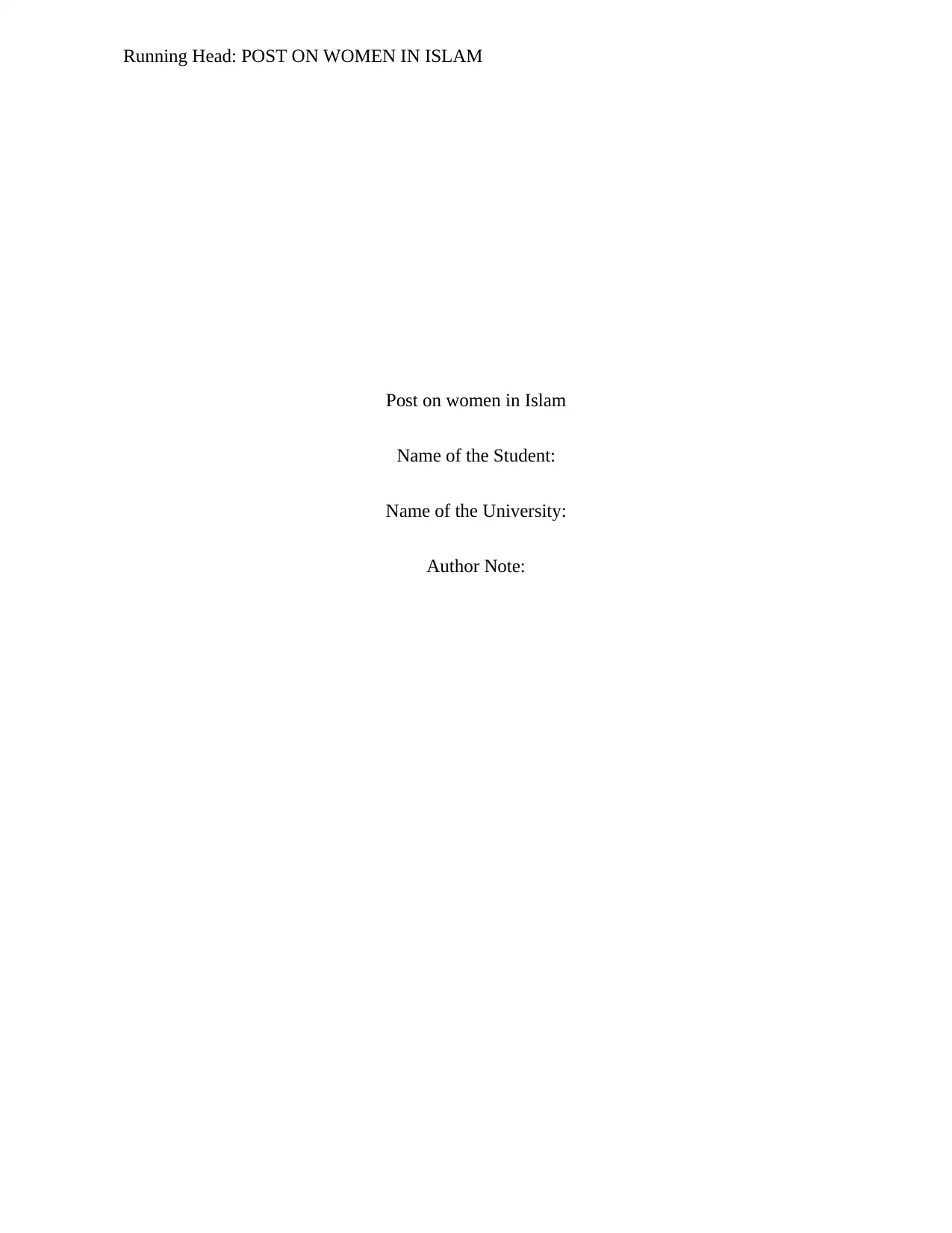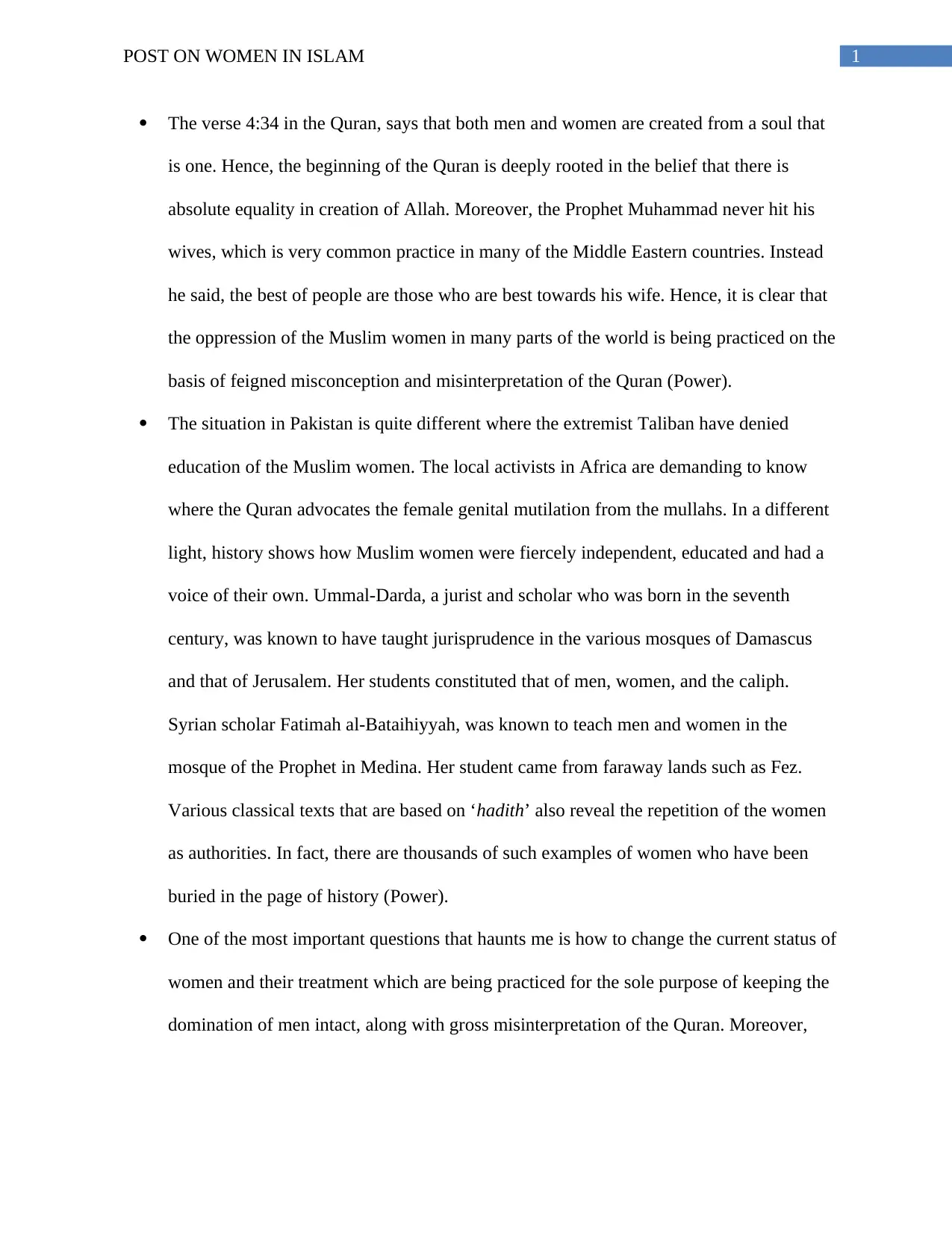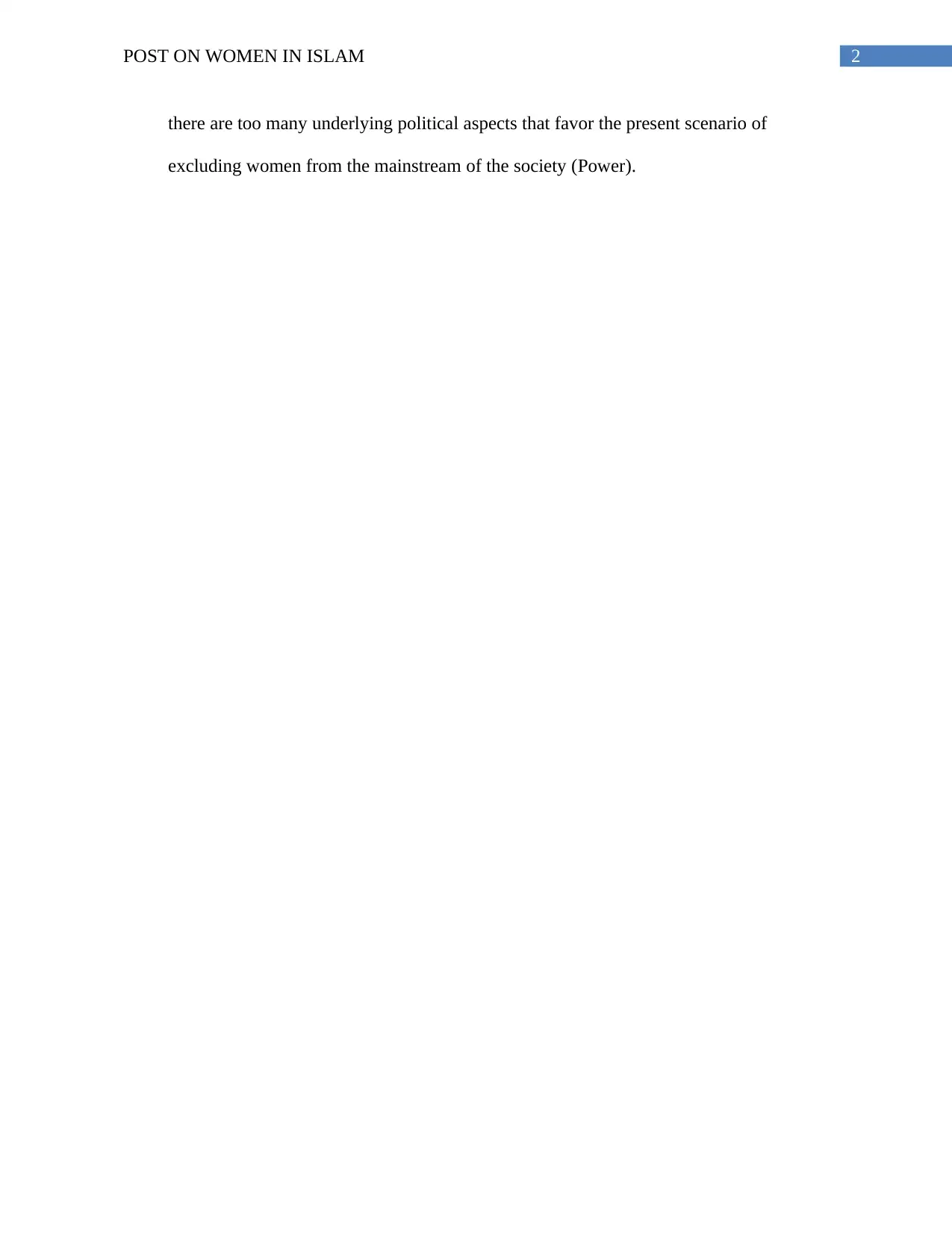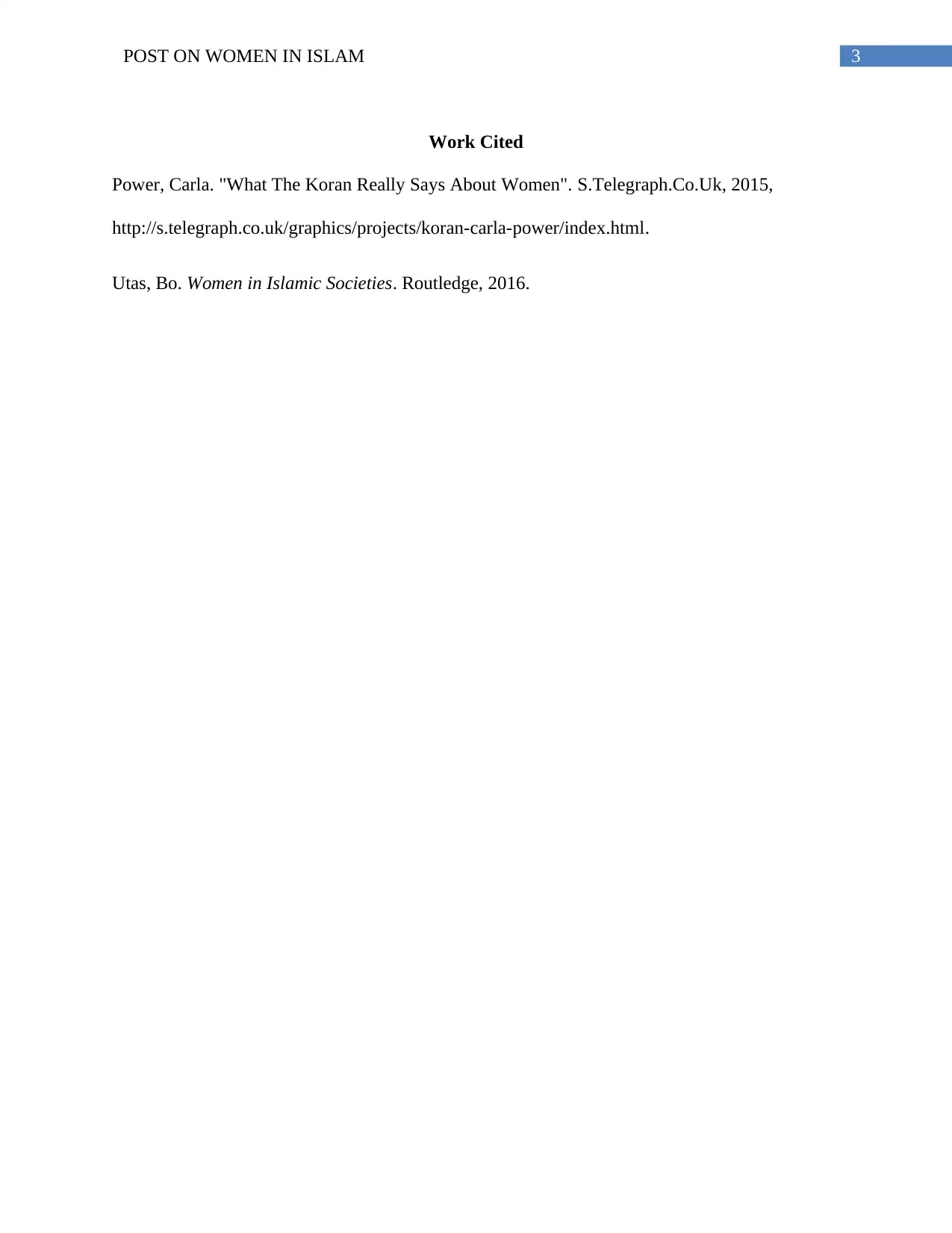Women in Islam: Quranic Teachings, History, and Modern Challenges
VerifiedAdded on 2022/08/12
|4
|458
|11
Report
AI Summary
This report examines the multifaceted role of women in Islam, exploring the historical context, Quranic teachings, and contemporary challenges. It begins by highlighting the Quran's emphasis on the equality of men and women, contrasting this with the misinterpretations and practices that have led to the oppression of women in certain regions. The report delves into historical examples of empowered Muslim women, such as scholars and jurists, who played significant roles in education and religious discourse. It contrasts this with the current challenges, including the denial of education and the misapplication of religious texts. The report concludes by emphasizing the need to address the political and social factors that perpetuate the marginalization of women, advocating for a more accurate interpretation of the Quran and a reevaluation of cultural practices to ensure gender equality. The report also provides a reference to a research article on the subject matter.
1 out of 4











![[object Object]](/_next/static/media/star-bottom.7253800d.svg)